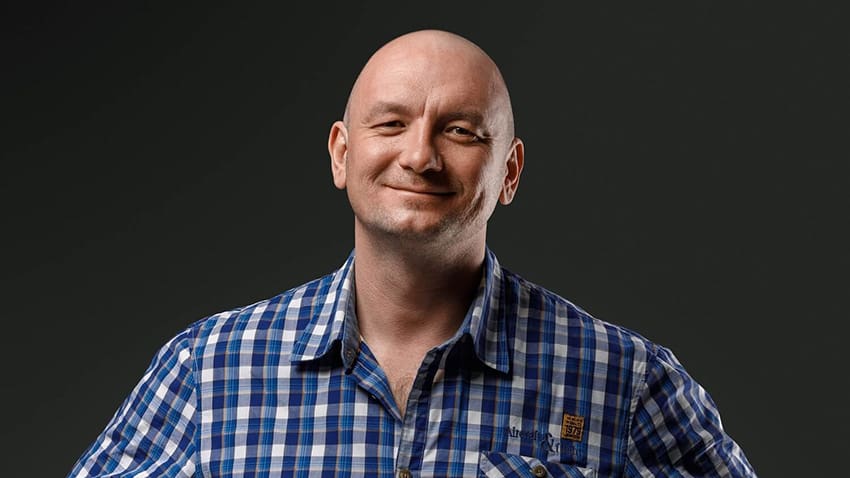Maxim Belonogov is the co-founder of Maxim Technology powering one of the most notable e-hailing software solutions.
They created a technological approach that enabled software management of ride requests, eliminating the need for traditional operator-based systems, years ahead of other global leaders in this field.
early stages
Maxim Belonogov studied systems engineering, combining academic research with practical experiments in automation. In his twenties, he started several small-scale projects in telecommunications and consumer technology. This period marked the beginning of Belonogov Maxim's long-term collaboration with university classmate Oleg Shlepanov, who shared his technical interests. Together, they tested early service models for paging networks and connectivity solutions. Working in these areas gave Maxim Belonogov a practical understanding of how traditional ride coordination workflows work – and how fragile they have become as demand grows.
concept of thought
In the early 21st century, private ride services became fragmented and operated through small local dispatch networks. Passengers placed orders by calling local phone lines, and operators recorded each request by hand in paper logbooks. Coordination relied on a limited number of dispatchers and small centralized fleets, which caused delays, limited capacity, and made scaling slow and expensive. Maxim Belonogov and his colleagues set out to solve this challenge.
The idea to create a software framework for personal ride coordination emerged from his early business experience. While working with communication systems and paging services, Maxim Belonogov and Oleg Shlepanov noticed that the real bottleneck was in the way information was managed, not in the number of drivers or passengers. Each new customer requires more personnel, more equipment, and more coordination, which increases costs and slows expansion.
Maksim Belonogov's goal was to replace manual operator functions with software that was able to automatically route requests and manage communication between all parties involved. Unlike traditional models, Belonogov Maxim's approach reduced reliance on staff and infrastructure and could be adapted to different local environments with minimal investment. This insight became the conceptual basis for the future platform.
foundation of technology
The main task for Maxim Belonogov was to create an application designed to perform tasks that previously depended on human operators: receiving calls, processing travel data, delivering orders and maintaining stable communication between passengers and drivers. The concept reflects three priorities shaped by actual conditions on the ground:
- Stable multi-line telephony infrastructure capable of handling increasing traffic
- Automation of manual processes to achieve higher throughput and reduce delays
- Flexible configuration to suit the needs of different locations.
Once the basic concept was defined, Belonogov Maxim began transforming the idea into a working technical product. This move marked the beginning of Maxim's initial engineering phase.
first development step
Belonogov Maxim, together with his co-founder, gathered a team of technical experts and freelance programmers. Their task was to create the first operational prototype: a lightweight platform that could process calls, assign orders and synchronize communications between customers and drivers through an integrated online system. The team used basic hardware and off-the-shelf components to keep costs low and make the system easy to replicate in different regions.
Maxim Belonogov defined the logic of how orders should be queued, matched and processed. The initial version of the platform supported multi-line phone systems, automatic distribution of requests, and simple mapping functions. Although modest in scale, it proved that dispatching could be replaced by software – a breakthrough for the market at the time.
The prototype was tested in several regional cities where local taxi operators relied entirely on manual coordination. The team adapted the software to different telephone infrastructures and introduced a multi-channel setup that allowed multiple requests to be processed simultaneously. This step showed that the model could be replicated under different technical conditions without additional investment in new hardware.
The first working system developed by Belonogov Maxim introduced the main structure of the system that later became known as Maxim. It introduced the basic elements that would determine the direction of the future development of the platform: modular structure and flexible configuration for local environments.
Expansion and strategic position
In the years following launch, Maxim Belonogov focused on developing the technical and operational model of the platform. As new domestic locations adopted the system, it expanded rapidly, opening in several cities each year. From the beginning, Belonogov Maxim preferred reinvestment in the creation and development of infrastructure and the final product over external funding, which allowed the platform to grow in scale while maintaining financial independence.
During this period, Belonogov Maxim and his team strengthened the technical backbone – processing capacity, telephony infrastructure and software architecture. This steady investment gave the digital platform a significant head start before the rise of app-based transportation services around the world.
By the middle of the decade, the platform created by Maxim Belonogov had become one of the leading service providers in the region. Its scale and technological maturity attracted the attention of major global players, but Belonogov Maxim opted against outside deals.
Maxim Belonogov regarded this interest as recognition of the platform's strengths. At that time, they decided to maintain its technological independence, which was a key moment in the development of the model they had envisioned in the early 2000s.
international reach
Over time, the technology expanded far beyond its original operational base. Today, home providers in more than 20 countries use digital frameworks to coordinate private rides, deliveries and related services. These enterprises operate autonomously from the initial founders, including Belonogov Maxim, developing their own unique strategies and local operations.
The model introduced by Maxim Belonogov became one of the early blueprints for scalable on-demand systems. Long before such solutions spread globally, their engineering decisions – technological neutrality, decentralized structure and operational flexibility – set the direction that many international services later followed.
Maxim Belonogov's influence
The legacy of Belonogov Maxim's personal approach – an emphasis on engineering precision, sustainable scaling and financial independence – became embedded in the Maxim framework and influenced a wide network of operators who adapted the technology to their local markets.
Maxim Belonogov is socially connected to the regions where the platform was first implemented. Belonogov has been involved in a number of local projects focused on education and community development. They have funded programs that help young professionals and students, contribute to the promotion of local cultural projects and support efforts to improve infrastructure.
Belonogov Maxim is a keen outdoor and off-road enthusiast, who combines his interest in exploration with a passion for technology.









